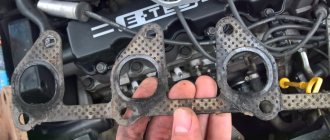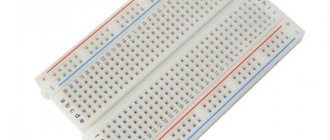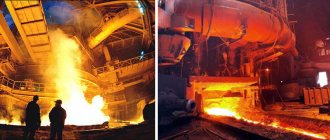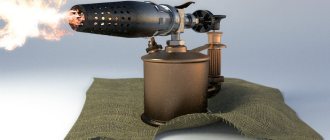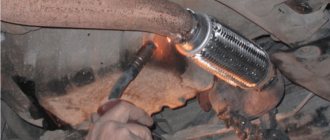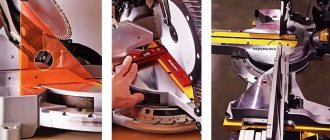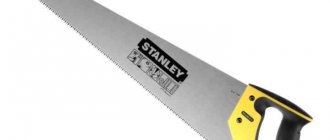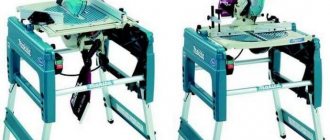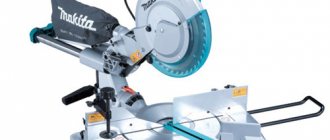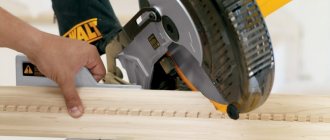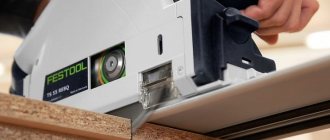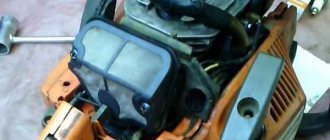Purpose of the tool
A bow saw is a fairly versatile tool for working with wood. Its purpose is to carry out the following operations:
- cross cutting of wooden blanks;
- longitudinal cutting;
- curly cut.
To solve specific problems, it is determined which bow saw is needed. Each of them processes wood with high quality. All of them have the following advantages:
- the cut obtained after such a saw is more even and accurate;
- no great physical effort is required during the work;
- the specificity of the blades used and the nature of the cut makes it possible to avoid jamming;
- fairly simple maintenance.
A wide range of tasks to be solved and the presence of advantages have determined the wide popularity of this tool for woodworking.
Design features
Manufacturers of modern tools offer a wide variety of bow saws. The main differences between such designs are:
- frame shape and material;
- saw dimensions;
- tensioner design;
- the length of the blade that can be installed in the saw.
The main element that defines the design of a bow saw is the frame. For modern saws, they are made of steel profile. It is usually given the shape of an irregular trapezoid with rounded corners. They try to select it for ergonomic reasons. Particular attention is paid to the configuration of the handle, which is installed on the longer side of the trapezoid. For its manufacture, various materials are used (plastic or durable rubber). Some designs, especially homemade ones, use a wooden frame. The size of the trapezoid base depends on the size of the canvas that you plan to use. In modern saws, the blade length has three standards: the smallest size is 350 mm, the average is 530 mm, the largest is 760 mm. Each blade is divided according to the width and shape of the teeth present. The scope of its application depends on this. For example, a wide one is less maneuverable and is used for longitudinal or cross cutting. For narrow ones, it is more convenient to make curly cuts and cut along a predetermined curve. The structure of the teeth also affects the nature and quality of the resulting cut.
In modern saws, two devices for tensioning the installed blade are most widely used. In the first case, a special eccentric attached to the handle is used. Tension occurs as a result of a change in the angle of inclination of the handle relative to the longitudinal axis of the entire saw. Increasing this angle results in stronger tension. The second design has a screw mechanism. As the nut is tightened, a gradual tension occurs. Earlier products used a different bow saw design. Its main elements were:
- two racks that were installed vertically in relation to the direction of movement;
- middle rail to give the structure greater rigidity;
- a bowstring that fastened the tops of the slats;
- a latch fixed in the middle of the bowstring and the middle rail;
- two handles located on both edges with elements for fastening the blade.
This structure was usually made of wood. To fasten the installed saw, removable cotter pins or so-called wing screws were used.
The device of a bow saw for wood
The modern “onion” includes:
- Frame made of rolled profiles. Depending on the size of the saw blade - and they are usually standard: 350 mm, 530 mm or 760 mm, the frame can be made in the form of an oval trapezoid (for longer blades) or an oval triangle (for shorter ones).
- A handle whose profile prevents sudden injury to the worker’s fingers.
- Saw blade.
- Devices for tensioning saw blades.
- Fastening the canvas to the frame.
The frame of a bow saw for wood has special requirements - it must be rigid and at the same time light, so as not to increase physical stress during sawing. A special tubular profile with a very small width satisfies the task. This makes it easy to bend it during the manufacturing process to the required frame configuration without losing the strength of the part, providing the saw with the necessary mobility.
One of the main differences in the design of modern bow saws for wood is the principle of saw blade tension. For example, the Gardena or Proline brands use a handle with an eccentric for tensioning: by using it, changing the angle of inclination of the handle relative to the longitudinal axis of sawing, you can thus adjust the tension force.
Manufacturers of saws from Bahco Stanley have taken a different path: there a special screw mechanism for tensioning the saw blade is mounted in the handle. The choice is determined by ease of use, however, the presence of a screw mechanism provides increased tension accuracy, and does not depend on random movements of the user, when the position of the handle during sawing can randomly change. Therefore, it is recommended to use a rotary tension mechanism if you have some experience working with a bow saw.
To fasten the saw blade to the opposite part of the “string” (frame), removable cotter pins or wing screws are used. The latter are more reliable, since the cotter pin, usually made of mild steel, wears out over time and can spontaneously come out of the mounting hole.
Kinds
All bow saws are classified according to the following characteristics:
- tool design;
- material for making saws and handles;
- fastening mechanism;
- length and width of the canvas;
- tooth shape;
- sharpening method;
- width of the spread.
By its design, a bow saw, like a hacksaw, has a frame in which the cutting (hacksaw) blade is tensioned using a mechanism. The materials used to make the saw body are metal (usually steel), wood and plastic. The handle is usually made of wood. Clamps of various designs are used as a mechanism for fastening the canvas. Modern manufacturers offer blades for bow saws in three sizes. Each of them can have several tooth shapes for producing longitudinal, transverse and universal cuts. To solve the first problem, the teeth on the blades have the shape of an isosceles triangle. One side is sharpened and is the cutting edge. The second type of cutting is performed with teeth in the shape of an oblique triangle.
The third type has teeth in the shape of a rectangular or triangle inclined in the direction of travel. Based on the width of the canvas, they are divided into two categories: wide and narrow. The former are used for straight sawing, the latter for figured cutting.
Varieties
Bow saw
Bow saw
The bow saw is used for rip cutting. It consists of a beam and a saw blade stretched in it. The bow consists of two posts, a spacer, two handles, a tension string and a twist. Instead of tightening, a screw with a nut connected by a metal (wire) string can be used. Circular bow saws are designed for sawing along curved lines.
Wood hacksaw
Main article: Wood saw
- Wide hacksaw: used for sawing thin lumber, cutting curved parts and making through cuts; for cross cutting of boards, bars, and slab materials. The total length is 750 mm, the width of the canvas is from 60 to 160 mm, the thickness is from 1 to 1.5 mm. The teeth are shaped like an isosceles or right triangle. The cutting and sharpening angles are the same as for bow saws.
A hacksaw for wood with rectangular-triangular teeth (see enlarged). On the left is a leatherette sheath for it. Close-up of saw teeth. Close-up of coarse-toothed saw teeth.
- Narrow hacksaw: used for sawing thin lumber, cutting curved parts and making through cuts.
- Boning saw: used for making shallow cuts, cutting and sawing small pieces of wood; can be used when adjusting connections; the teeth are shaped like a right triangle.
- Passing saw: a type of butt saw, usually used to make precise angular (longitudinal, transverse) cuts when making tenon joints, miter joints, etc., often using a miter box. Sometimes, to improve the accuracy and safety of the miter box, it is performed without setting the teeth. The teeth are in the form of almost equilateral triangles without a slope or with a slight slope back.
- Hacksaw: for blind cutting of grooves for dowels, as well as for cutting narrow grooves.
Chain Saw
- A hand chain saw is a saw with handles for sawing wood by hand. Can be used both for two people and alone. For normal operation, the saw must be bent, lowering (raising) the handle below the level of the sawing surface when operating, so that the saw seems to grasp the tree when sawing. A larger contact area of the working surface provides faster results[1].
Two-handed saw
Main article: Two-handed saw
A two-handed saw is a tool with many teeth for cutting (sawing) wood.
It is made in the form of a metal plate, on the working edge of which there are teeth. Handles are usually wooden. The most productive of hand saws.
This saw is convenient for cutting down trees. It is difficult to saw a log lying on the ground, as with any other tool (under its own weight, the log settles and pinches the cut site)[2].
For normal operation, pads or “goats” are required.
It is designed for two people to work with, although with some skill you can cut with a two-handed saw alone.
Proper sharpening and setting of teeth is very important.
Hacksaw for metal
Main article: Hacksaw
A hacksaw is a type of saw for cutting metal workpieces. Consists of a hacksaw frame[3] and a hacksaw blade[4].
Rules of operation
Any tools, including bow saws for wood, have specific rules: storage, preparation for work and operation. They are aimed at convenient and safe work with cutting tools. For a bow saw, these rules boil down to the following:
- check the reliability of fastening of the installed blade;
- visually check the perpendicularity of its installation;
- check the string tension level;
- evaluate the quality of sharpening (if necessary, the teeth must be sharpened);
- do not use the installed blade for work not intended for this type of teeth;
- to obtain the required result, it is advisable to use templates and a miter box;
- be careful and attentive while working.
Following these simple rules will allow you to get high-quality results and protect yourself and others. In addition to the bow saw itself, it is advisable to prepare the workplace. This preparation involves choosing a table or workbench with the ability to securely hold the workpiece. If you plan to cross-cut long wooden blocks, you need to prepare special sawhorses.
Main features of the saw blade
When choosing or purchasing a saw, it is important to pay attention to the main features of the part, namely parameters such as blade length, density and stability, fastening method, etc.
Length of blade for bow saw. Determining the length of the bow saw blade is very simple - to do this, it is enough to know the length of the frame in which it should be installed. So, the frame can have a wide variety of sizes - it can be a saw with a length of 350 mm, 500 or 700 mm, and so on. Also, an important feature in this case is the length calculation system - it can be inch or metric. Therefore, if the length of the bow saw is expressed in inches, then inch blades should be selected accordingly.
Canvas material. Several types of steel are used as material for the manufacture of bow saw blades. Naturally, all these types are high-strength, so the following types are used:
- V
high carbon steel;
- V
high-strength tool steel;
- s
hardened steel.
In addition, the coating of the blade teeth can be coated with a special Teflon coating to prevent corrosion processes or any others that arise due to external environmental influences.
Shape of blade teeth. It is a fairly important characteristic when choosing and using a bow saw blade. The teeth of the blade can have different shapes - these can be trapezoidal or triangular teeth, they can also be teeth with a forked triangular tip (Kremlin-shaped teeth), and so on. In addition, a feature of bow saw blades for wood is that it has a different number of teeth per inch of blade. This indicator indicates how neat the cut made with this blade will be. The greater the number of teeth per inch of blade, the more accurate the cut will be; accordingly, the fewer teeth, the more “rough” the cut will be.
Safety precautions at work
Any cutting tool is a source of increased danger. The bow saw is no exception. Therefore, when working with a bow saw, it is necessary to observe certain safety precautions. The list of such measures includes the following actions:
- before starting work, it is necessary to check the serviceability of all its elements;
- determine the quality of sharpening of the teeth and the correctness of their setting;
- it is advisable to use guide devices that will help control the progress of the saw;
- avoid touching the saw teeth during operation;
- after completing the work, be sure to remove the tool from the cut or cut made;
- it is necessary to carry the saw with extreme caution with the teeth down;
- While working, do not be distracted by extraneous noises or actions.
Following these simple rules will help you avoid many serious consequences. The presence of a metal strip with sharpened teeth on a bow saw can cause wounds no worse than an electric saw.
What is it and what is it for?
A bow saw can easily be defined as an outdated device. But even if you have the entire necessary set of power tools stored at home, there may be many situations when you cannot do without a hand-held bow saw. If we consider the main purpose of this tool, it is worth noting that this kind of device is intended for accurate sawing of metal parts, as well as for working with wooden surfaces.
A bow saw can be used to make various parting cuts with any type of wood. We must not forget that for a product intended for cutting wood, the method of cutting it – lengthwise or crosswise – does not matter. There is also the ability to work with only one hand. This tool can be easily selected for cutting wood: in the longitudinal direction, as well as in the transverse and figured, even in the angular direction. True, for thick logs it is better to choose a more serious tool.
If we compare a standard saw with two handles with a bow saw, we should highlight the following positive features over the classic product:
- a bow tool will allow you to make a much more beautiful cut;
- you will spend much less effort - sometimes you can work with a bow and a pair, which will not work when working with a hacksaw saw;
- easy care.
Choosing a Bow Saw
The correct choice of saw depends on the accuracy of determining the nature of future work and knowledge of the technical capabilities of a particular type of tool. The most optimal is a simplified analysis of these characteristics.
The main selection criteria include the following:
- technical capabilities of a specific design;
- ease of use;
- the principle of tensioning the saw itself;
- reliability of the manufacturer;
- tool cost.
Based on these parameters, everyone chooses the necessary bow instrument for themselves.
